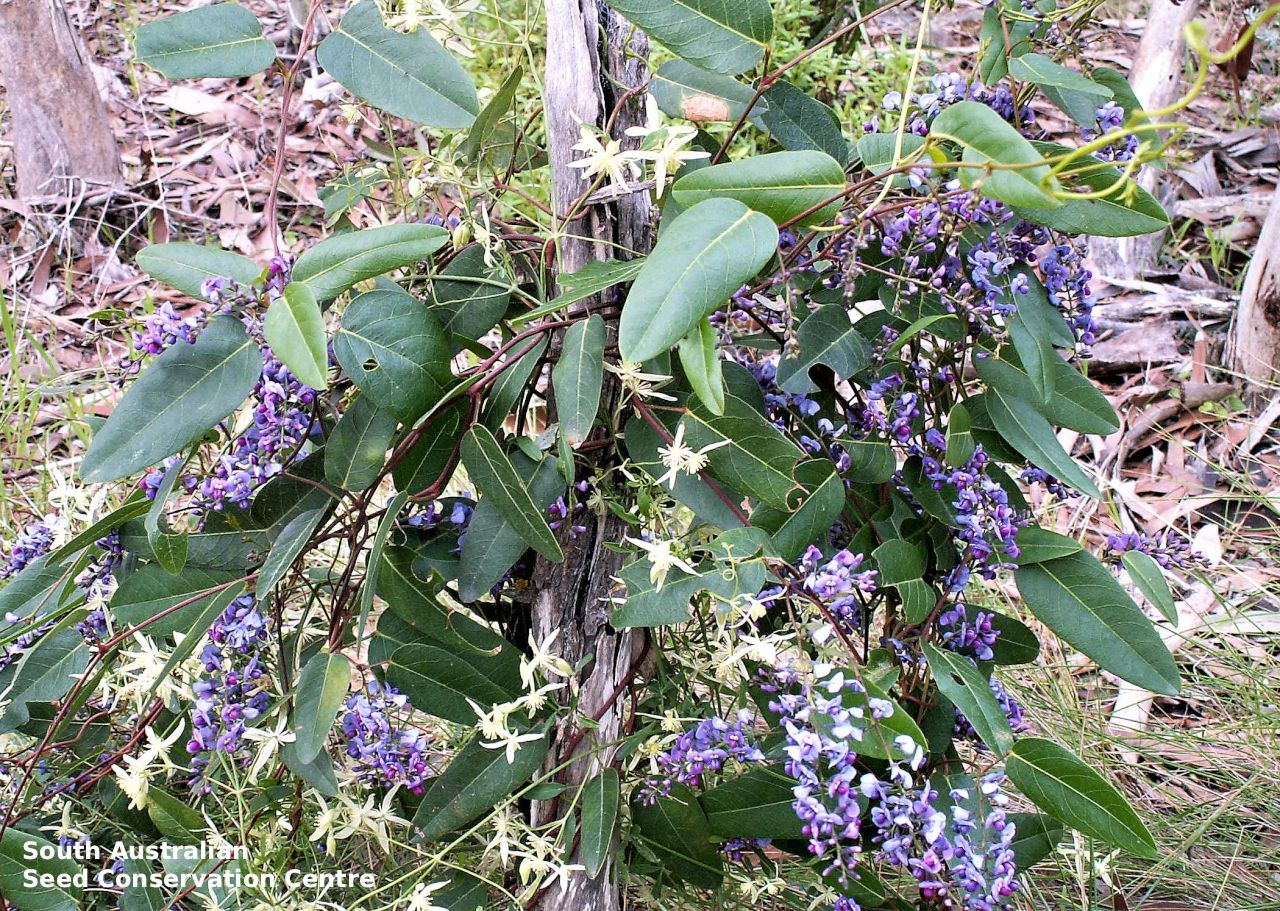
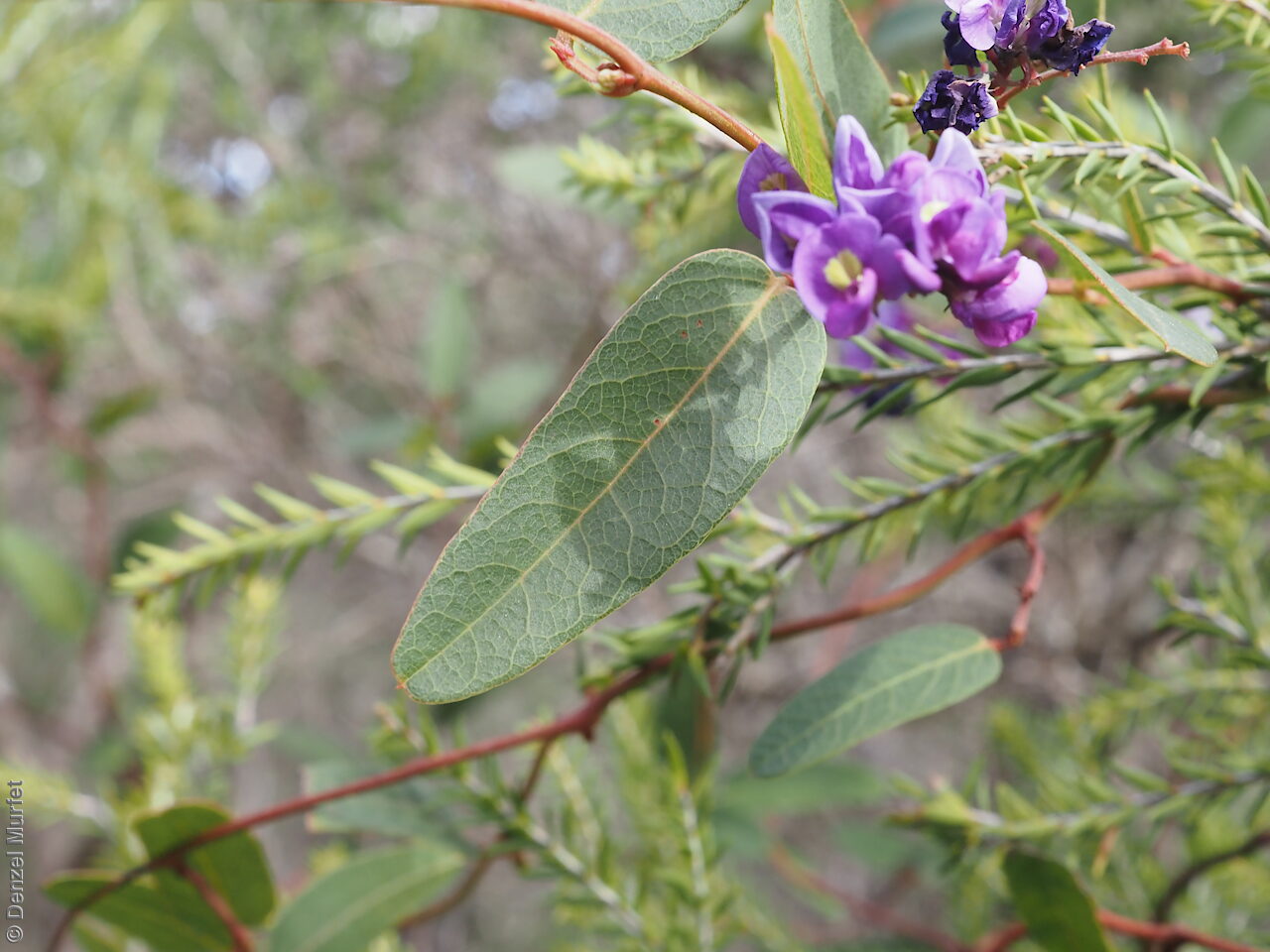
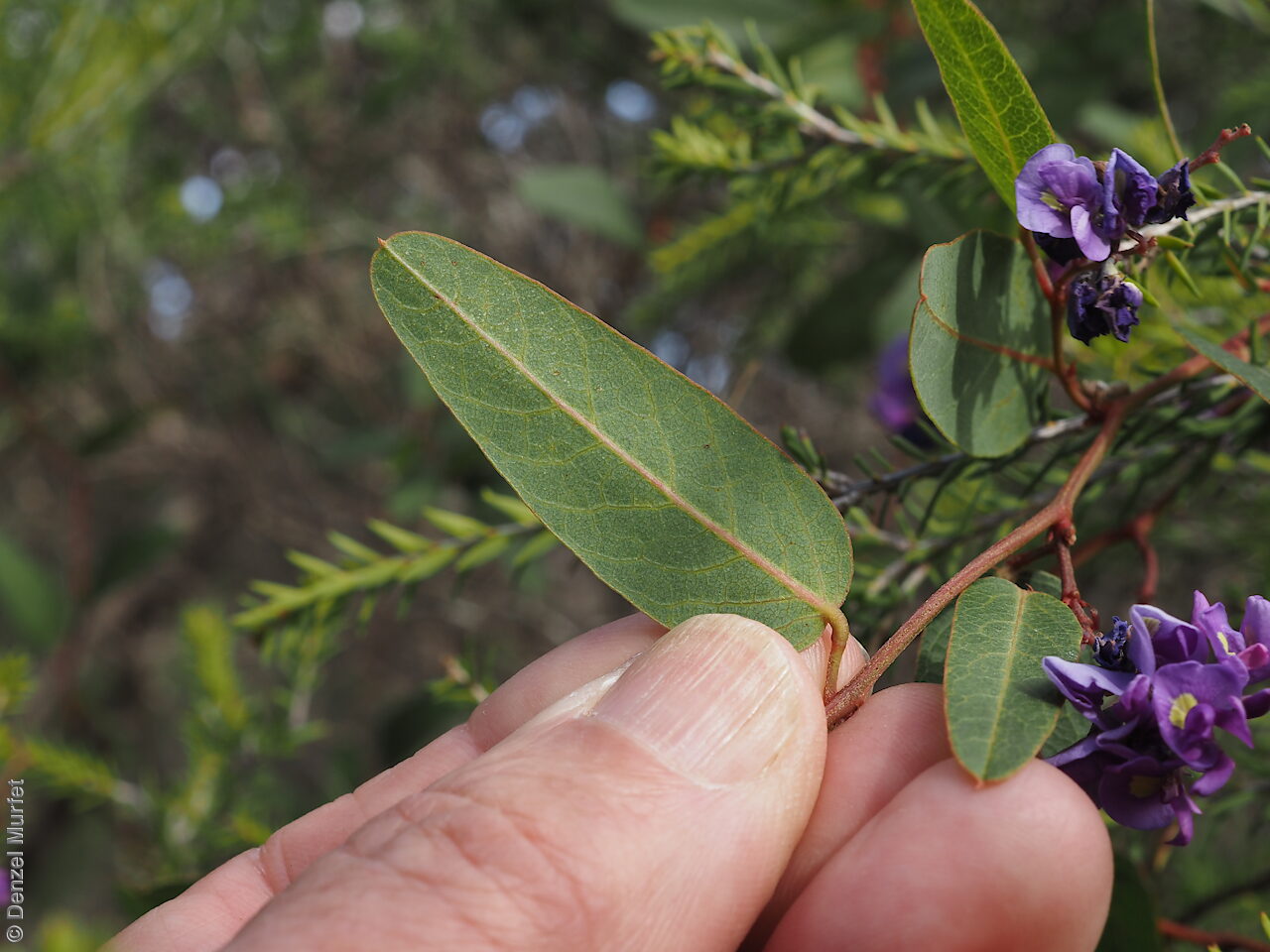

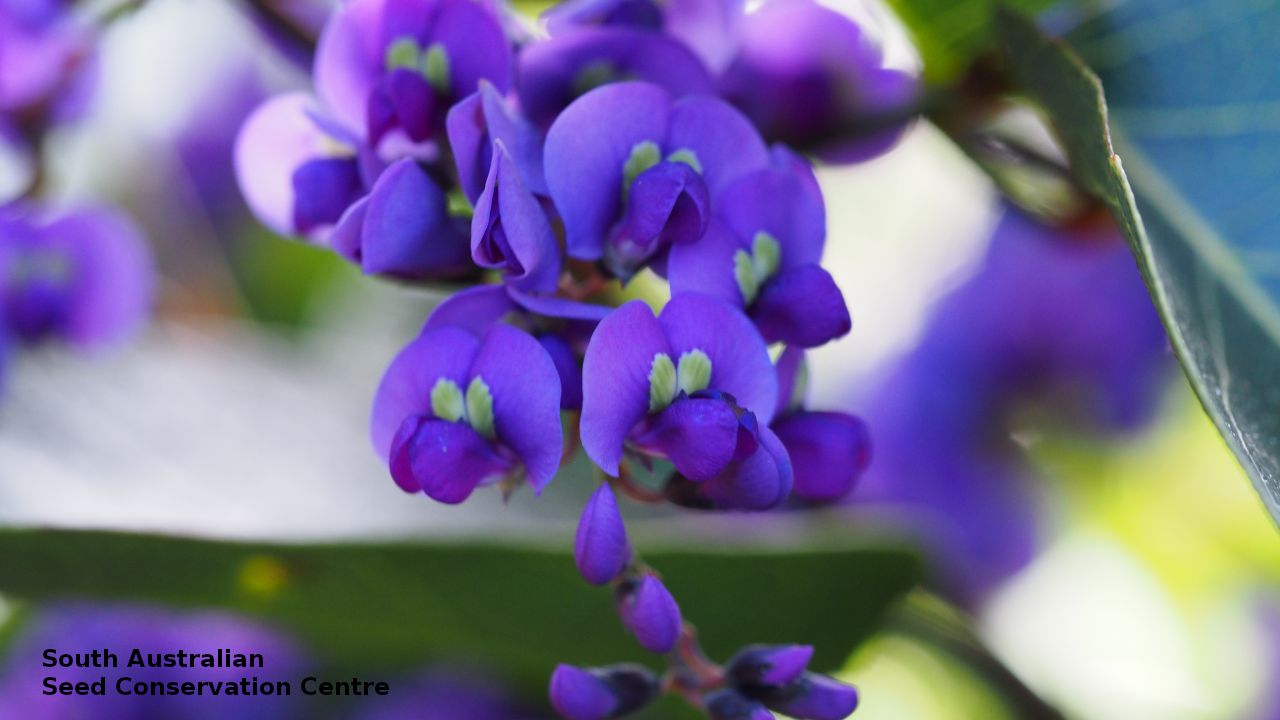
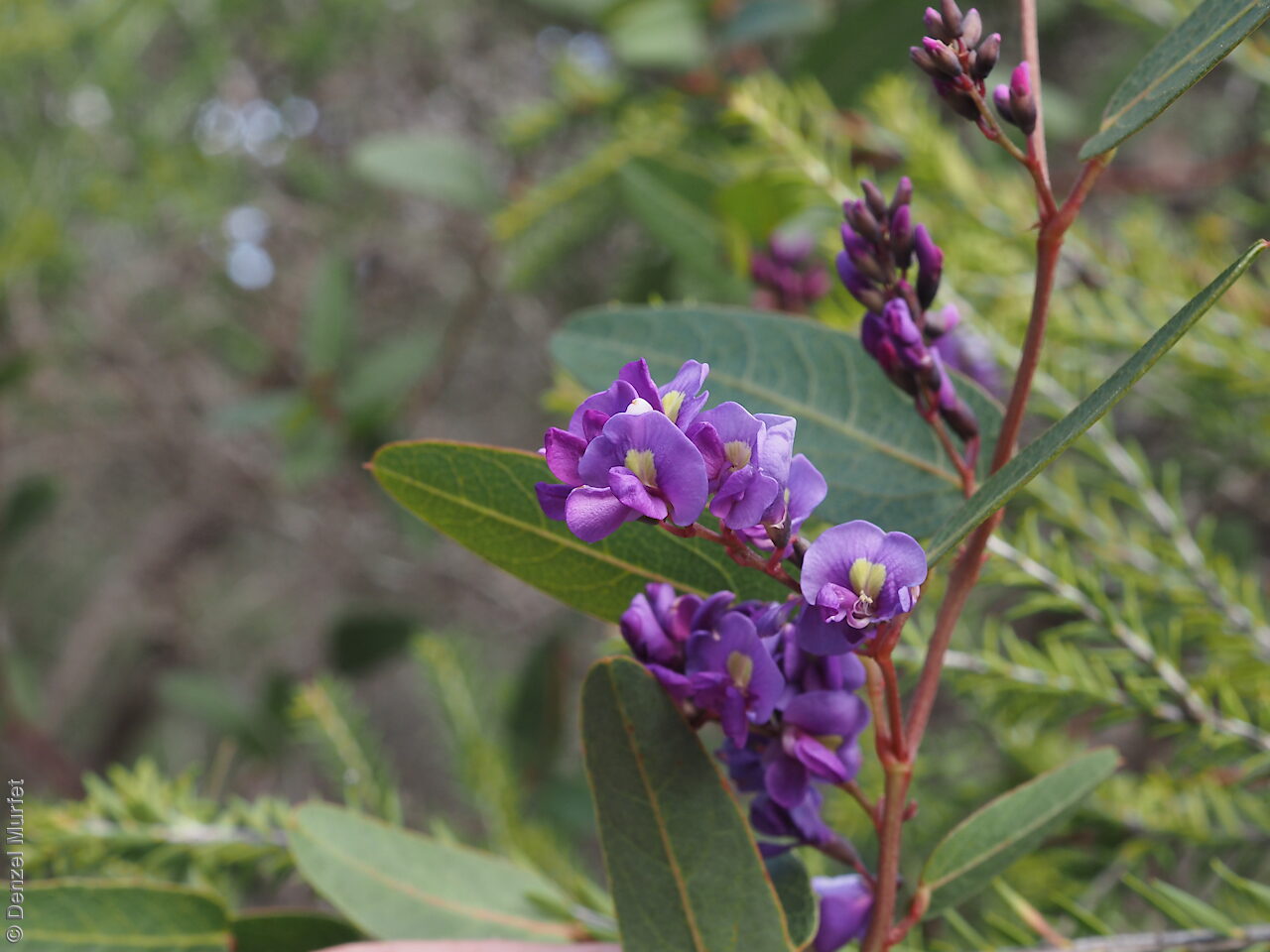
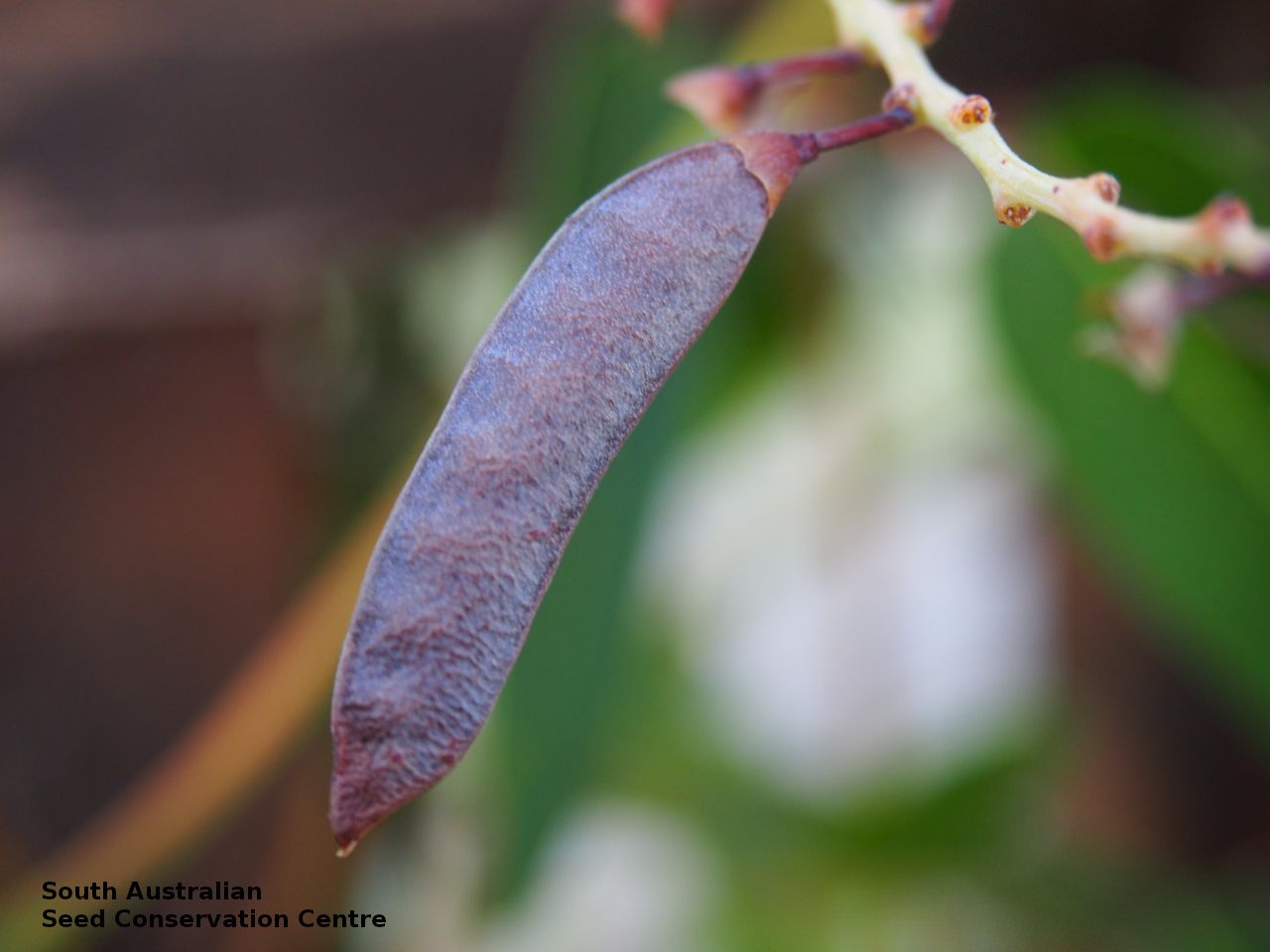

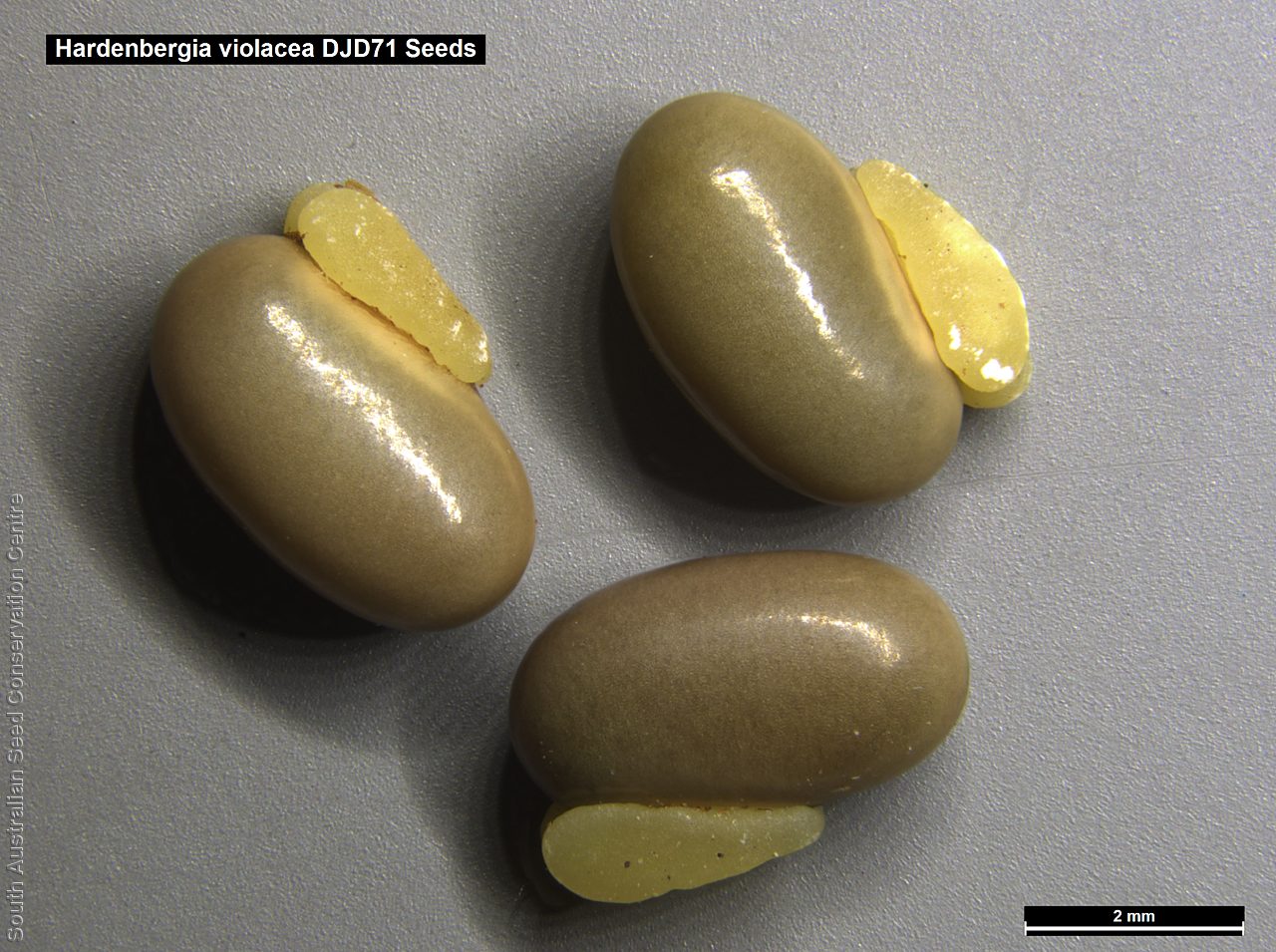
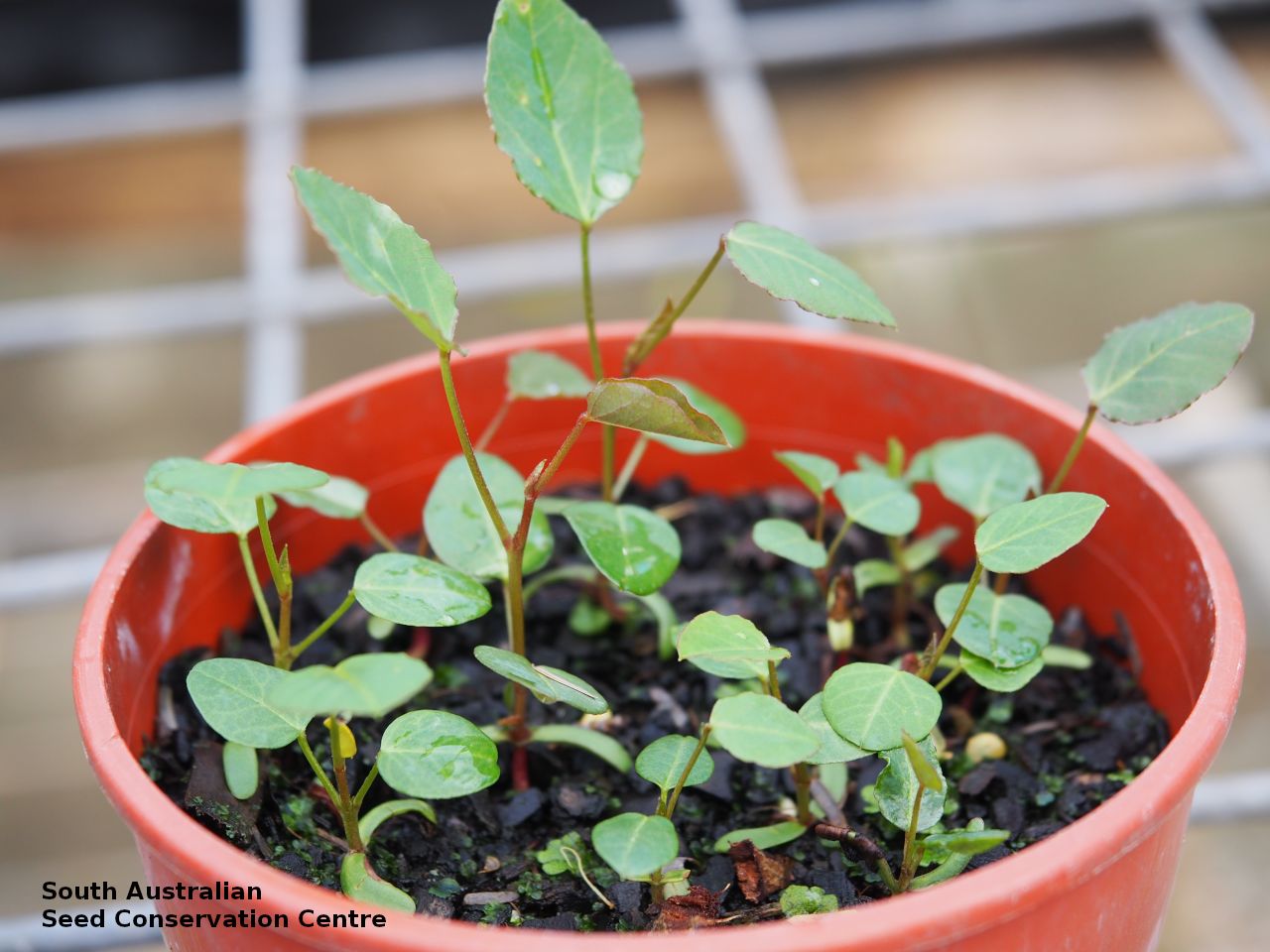

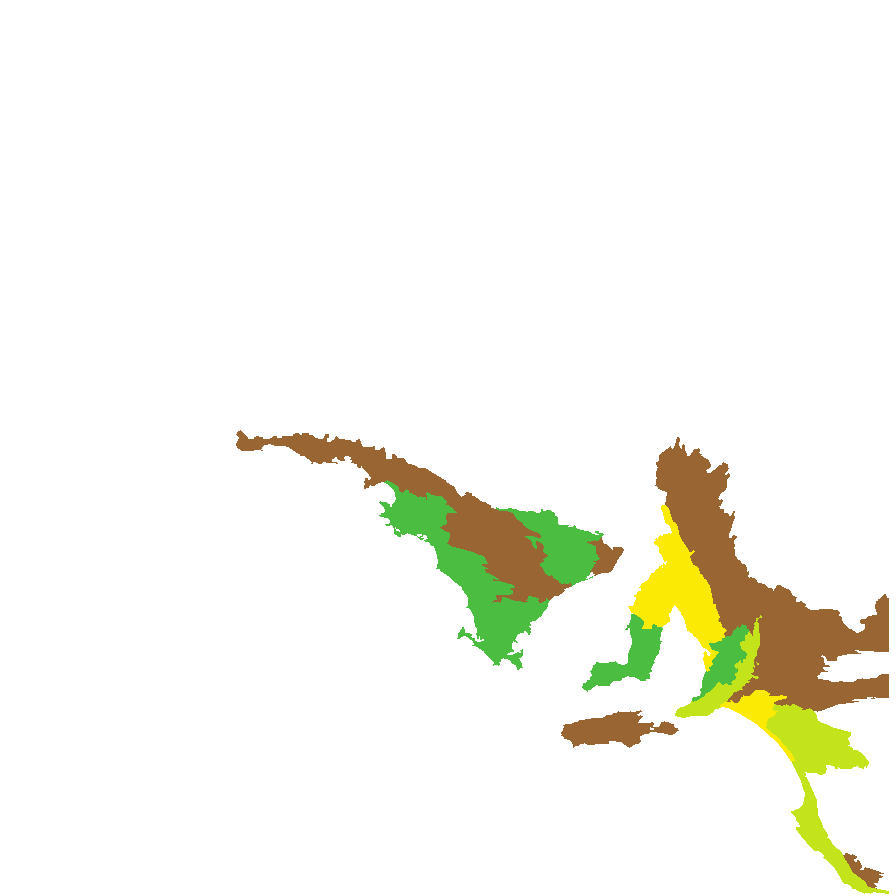
Botanical art
Prior names
Kennedia monophylla
Hardenbergia monophylla
Glycine violacea
Common names
Purple Coral-pea
Native Lilac
Etymology
Hardenbergia, named after Franziska, Countess von Hardenberg, a 19th century Austrian noblewoman, patron of botany and a sister of Baron von Hügel who collected plants in Western Australia in 1833. Violacea, from Latin meaning violet colour, referring to the typical colour of the flower.
Distribution and status
Found in the southern South Australia from the Eyre Peninsula to the upper South-east, growing in drier open-forests and woodlands. Also found in Queensland, New South Wales, Victoria and Tasmania. Native. Common in South Australia. Very rare in Tasmania. Common in the other States.
Herbarium regions: Flinders Ranges, Eyre Peninsula, Northern Lofty, Murray, Yorke Peninsula, Southern Lofty, Kangaroo Island, South Eastern, Green Adelaide
NRM regions: Adelaide and Mount Lofty Ranges, Eyre Peninsula, Kangaroo Island, South Australian Arid Lands, South Australian Murray-Darling Basin, South East
AVH map: SA distribution map (external link)
Plant description
Scrambling or trailing perennial shrub with branches that twist around the stems of other plants. Leaves leathery, glabrous; ovate to lanceolate, to 10 cm long, arranged alternately along the stem on stalks to 4 cm long. Inflorescence in axillary clusters with violet (rarely pink or white) pea-flowers. Flowering between July and November. Fruits are dark brown flattened oblong pod to 50 mm long by 8 mm wide. Seeds are orange reniform seed to 4.2 mm long and 2.2 mm wide. Seed embryo type is bent.
Seed collection and propagation
Collect seeds between November and January. Collect mature pods, those turning brown that contain hard seeds inside. Place the pods in a tray and cover with paper to prevent seeds popping out and leave to dry for a week. Then rub the pods with your hands to dislodge the seeds. Use a sieve to separate the unwanted material. Store the seeds with a desiccant such as dried silica beads or dry rice, in an air tight container in a cool and dry place. From two collections, the seed viability was high, ranging from 90% to 100%. This species has physical dormancy that needs to be overcome for the seed to germinate (e.g. nicking or softening the seed coat).
| Location | No. of seeds (weight grams) | Number of plants | Date collected | Collection number Collection location | Date stored | % Viability | Storage temperature |
|---|---|---|---|---|---|---|---|
| BGA MSB | 16,100 (215 g) 16,100 (215 g) | 100 | 8-Dec-2004 | DJD74 Eyre Peninsula | 31-Mar-2006 | 100% | -18°C |
| BGA | 1,540 (34.34 g) | 18-Dec-2005 | KHB16 Murray | 7-Aug-2006 | 90% | -18°C |
Number of plants: This is the number of plants from which the seeds were collected.
Collection location: The Herbarium of South Australia's region name.
% Viability: Percentage of filled healthy seeds determined by a cut test or x-ray.